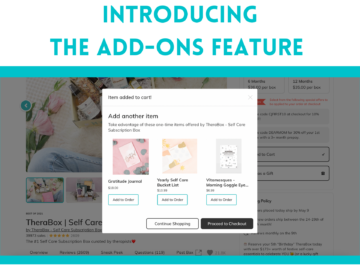In 2011, subscription boxes generated just $57 million in revenue in the US. However, in 2016, the industry booked $2.6 billion in sales – again, in the US alone. That is a massive growth curve, especially since subscription boxes pose a big opportunity to sell internationally too.
If you want to start a subscription box business and write your own success story, we’ve got two terms you need to learn: CPA and LTV.
What is CPA?
CPA stands for “Cost Per Acquisition,” and it’s as simple as that sounds. If you know your CPA, you know how much to spend to earn a new subscriber to your subscription box. (Keep in mind that CPA can also be referred to as CAC – Customer Acquisition Cost – or, more rarely, CoCA – Cost of Customer Acquisition.)
When you look at your CPA, you need to look at the cost of monetizing your business. This includes your advertising, influencers you work with to promote your box, and so forth. Divide this total by the number of new customers that you’ve acquired as a result of those investments.
Obviously, you don’t want to be spending more money on acquiring customers than you have coming in.
There’s no one benchmark for what a “good” CPA is, and it varies from one sector and industry to another. But if you spend $200 to gain ten subscribers, and each has a net profit of $20, then you’ve only broken even. And that’s not a great CPA.
For subscription services, however, breaking even may still turn out to be a good investment. Why? Well, due to the other metric we’d like to discuss: LTV.
What is LTV?
LTV stands for “Customer Lifetime Value.” This is the net profit you can attribute to your future relationship with a customer. If you keep a customer for two years, for example, then the LTV is the total profit you’ve made from that customer over those two years.
The longer the customer purchases from you, the greater their LTV is. If you have high subscriber turnover within a few months, then your overall LTV will be significantly less than that of a subscription box with lower turnover.
Let’s go back to our earlier example, but say you have a traditional retail business. If your advertising results in ten one-time customers, each with a profit of $20, you’ve spent $200 to get $200. If a customer loves your product, they might shop with you again, but often you must continue advertising to those customers to retain them. So, there’s an ongoing cost involved.
A subscription-based business can change that. Because your product is based around curation and experiential value, rather than one-time purchases, you’re likely to have higher retention. If you retain 50% of your original ten subscribers for a year, then five subscribers each give you $240 in profit. (That’s a total of $1200!) Because your subscription box is recurring, you can market to those customers less frequently than if you sold one-time retail. All you need to do is provide a great value proposition, product curation, and customer service.
Why LTV and CPA are important for a subscription box business
So far, it might sound like LTV is the only metric that really matters. CPA, after all, is a cost, while LTV represents the money coming back into your business. But you’d be shortsighted to dismiss your CPA! These metrics actually work best together. In fact. LTV can help indicate how much money you should spend on CPA.
From your LTV and churn rate, you can get a complete picture of how much your business earns from subscribers.
But that’s not all. You can also calculate how big a return to expect from acquisition and your maximum cost to earn additional revenue. In other words, by looking at LTV and CPA, you learn how much to spend from your profits in order to grow (or scale) your business.
Subscription services are an excellent opportunity to form a business around ongoing revenue streams. However, what can trip up businesses is a churn rate that leads to an inefficient LTV, coupled with too-high spending on CPA. As the old marketing adage goes, “It’s easier to maintain existing customers than find new ones.” When you start calculating your LTV and CPA numbers, you’ll quickly see why.
Take your next step with our pricing guide
Do you have an idea for an awesome subscription box guide?
Use our free subscription box pricing guide! This interactive tool uses the costs of materials, shipping, transactions and more to determine the price of your subscription box.
Still looking for inspiration? Check out these 50 Ideas for a Subscription Box Business You Could Start Today.



